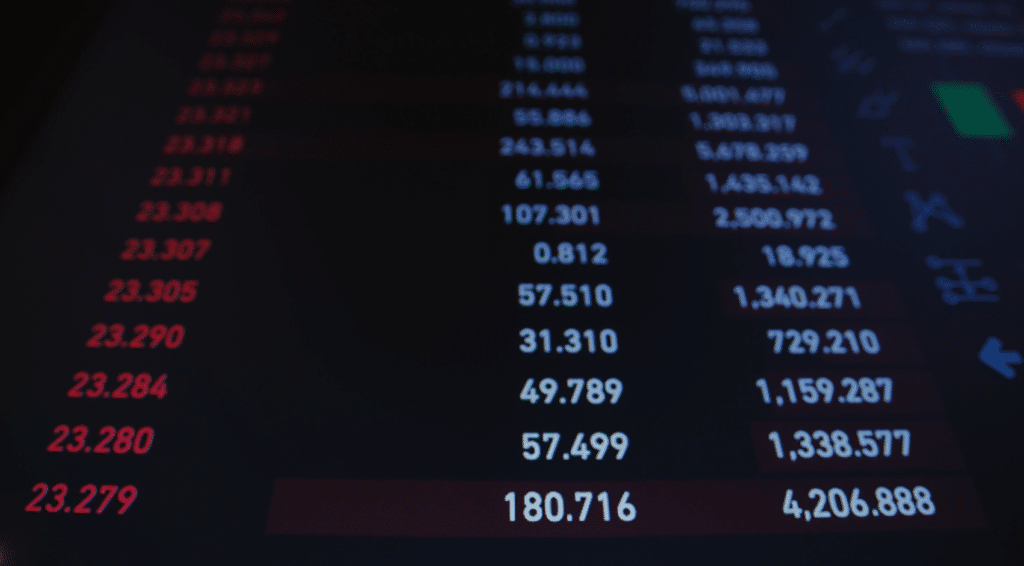Can I Buy Physical Gold with My IRA

Investing for the future often leads individuals to explore various retirement accounts, particularly Individual Retirement Accounts (IRAs). Among the different types of IRAs, Gold IRAs have gained popularity as a unique way to diversify one’s portfolio.
Yes, you can buy physical gold, such as gold coins and bullion, with a self-directed gold IRA. However, certain regulations dictate storage and purity standards of the gold is held. To gain a better understanding of buying physical gold with an IRA, we will discuss:
- What is an IRA?
- What is a Gold IRA?
- How Do I Buy Physical Gold with My IRA?
- What Are the Risks of Investing in Gold with an IRA?
- Can I Transfer My Existing IRA into a Gold IRA?
- What Are the Alternatives to Investing in Gold with an IRA?
This guide covers the essentials of IRAs, delving into the specifics of Gold IRAs, including the types of gold you can invest in, the benefits, and the steps to set one up.
It also explores potential risks, costs, and alternatives to help you make decisions about incorporating gold into your retirement strategy.
Whether you're an experienced investor or just beginning, this comprehensive guide will provide you with the knowledge needed to navigate the world of Gold IRAs.
What is an IRA?
An Individual Retirement Account (IRA) is a type of retirement account that provides individuals with tax advantages for saving money for retirement. It is an investment tool that individuals use to earn and earmark funds for retirement savings.
Within the umbrella of IRAs, there are multiple options available, including traditional and Roth IRAs, each offering unique tax benefits. A traditional IRA allows for tax-deferred growth, meaning individuals can deduct contributions from their taxable income, thus lowering their tax burden in the contribution year. Conversely, a Roth IRA, while not offering upfront tax deductions, allows for tax-free withdrawals in retirement, provided certain conditions are met.
Eligibility for both types of accounts varies, with income limits impacting Roth IRA contributions and age restrictions influencing traditional IRA distributions. The annual contribution limit is currently set at $6,500 for individuals under 50, with an additional catch-up contribution of $1,000 allowed for those aged 50 and above.
- Traditional IRA: Tax-deductible contributions, taxes paid upon withdrawal.
- Roth IRA: Contributions made with after-tax dollars, tax-free withdrawals.
Understanding these distinctions is crucial for effective retirement planning, ensuring individuals can make informed decisions aligned with their financial goals.
What Types of IRAs Are Available?
There are primarily two types of IRAs available: Traditional IRAs and Roth IRAs. A traditional IRA allows individuals to make contributions with money that can grow tax-deferred until it is withdrawn in retirement. On the other hand, a Roth IRA offers tax-free growth on contributions and tax-free withdrawals in retirement, provided certain conditions are met.
Whether you’re just starting your retirement planning journey or looking to optimize your existing savings, understanding the differences between these two options is crucial. Traditional IRAs are suited for individuals who anticipate being in a lower tax bracket upon retirement, while Roth IRAs can be advantageous for those expecting their tax rate to rise in the future.
Below are some essential features to consider:
Eligibility: To contribute to a traditional IRA, individuals need to have earned income, whereas Roth IRA contributions are subject to income limits.
Contribution Limits: For both types of IRAs, the contribution limit in 2024 is $7,000, or $8,000 for those aged 50 and above. This annual contribution limit will vary and likely increase year to year.
Tax Advantages: Traditional IRA contributions may be tax-deductible, which could result in immediate tax savings, whereas Roth contributions are made with post-tax dollars, leading to tax-free withdrawals later.
By evaluating these aspects, those planning for retirement can make more informed decisions based on their unique financial situations.
What is a Gold IRA?
A Gold IRA, also known as a precious metals IRA, is a self-directed IRA that allows investors to hold physical gold or other IRS-approved precious metals as part of their retirement account.
Diversifying a retirement portfolio with gold investments is a prudent strategy that can mitigate risks and potentially enhance financial stability during economic fluctuations. Investors can benefit from the historical resilience of gold, which has often been considered a safe haven asset. By including gold in a retirement strategy, individuals may protect their wealth from inflation and currency depreciation. A Gold IRA offers unique tax advantages, allowing investors to capitalize on the growth of their assets without immediate tax liability.
- Potential Hedge Against Inflation:As traditional currencies decline in value, gold has historically maintained its purchasing power.
- Portfolio Diversification:Including precious metals can reduce the overall volatility of a retirement portfolio.
- Tax-Advantaged Growth:A Gold IRA allows for tax-deferred growth, maximizing long-term benefits.
Ultimately, incorporating a Gold IRA into retirement planning not only adds a layer of protection but might also improve the overall performance of one’s investment strategy.
What Types of Gold Can Be Purchased with an IRA?
With a Gold IRA, investors can purchase physical gold, gold coins, and other IRS-approved metals such as silver, platinum, and palladium. These investments are held in a specialized account to support retirement planning and wealth growth.
Notably, the flexibility of a Gold IRA allows individuals to diversify their retirement portfolios significantly. By opting for various forms of gold, they can choose between gold bullion and collectible coins, both of which can potentially appreciate in value over time. It's essential to select the right type that aligns with one's investment strategy.
Consider the following options available:
- Physical Gold:This includes gold bullion bars that are purchased for their weight and purity.
- Gold Coins:Popular choices such as American Eagle, Canadian Maple Leaf, and South African Krugerrand are well accepted.
- IRS-approved Metals:Beyond gold, investors can also include silver, platinum, and palladium to further diversify their assets.
Understanding these choices enables investors to make informed decisions on their retirement investments while catering to their long-term financial goals.
What Are the Benefits of a Gold IRA?
A Gold IRA offers benefits such as risk diversification, portfolio diversification, and the potential for wealth growth through investments in physical gold and IRS-approved precious metals.
These advantages can provide a hedge against economic downturns and market volatility.
Along with these advantages, individuals may find that incorporating a Gold IRA into their retirement strategy can significantly enhance their overall financial security. This unique investment vehicle helps mitigate risk by allowing one to hold tangible assets, thereby creating a robust barrier against inflation and currency fluctuations. Gold investments are historically known for their ability to maintain value over time, making them a favorable choice for those seeking long-term wealth preservation.
- Investing in physical gold can provide peace of mind, as it is a finite resource not subject to the same market dynamics as equities or bonds.
- Utilizing a Gold IRA may also lead to potential returns that outperform conventional investment options, especially during periods of market instability.
Thus, the appeal of integrating a Gold IRA into one’s wealth management strategy extends beyond mere portfolio diversification; it symbolizes a proactive approach to securing a financially sound future.
How Do I Buy Physical Gold with My IRA?
Investors can buy physical gold for their IRA through specialized gold dealers or asset management firms that offer support for setting up and managing gold investments within a retirement account.
To successfully execute this process, individuals first need to establish a Gold IRA, which involves choosing a qualified custodian who will oversee the account.
Once the account is set up, the next step involves collaborating with reputable gold dealers who can provide the desired physical gold products, including bullion, coins, or bars. These dealers are essential in ensuring the authenticity and quality of the precious metals being purchased.
Asset management firms often play a vital role in guiding investors through the intricacies of the transaction, from compliance with IRS regulations to strategic portfolio allocation.
It's important for investors to research and consult with financial professionals, as their expertise can help in identifying the best options that align with long-term retirement goals and in navigating potential tax implications.
What Are the Steps to Setting Up a Gold IRA?
Setting up a Gold IRA involves selecting a custodian, transferring funds, and choosing a storage facility for the physical gold. Investors may need to engage with gold dealers to facilitate the purchase of gold bullion or coins as part of the IRA.
To embark on this process effectively, one must first identify a trustworthy custodian who specializes in Gold IRA management. The selected custodian should be experienced, have a solid reputation, and offer a range of services to assist investors through the complexities of the investment.
Once you have established your custodian, the next step is to initiate the transfer of funds. This typically involves filling out forms with your current retirement account provider to facilitate a direct rollover.
- After securing your funds, it’s essential to engage with reputable gold dealers.
- These dealers can provide valuable insights and options for acquiring gold that meets IRS standards, either in the form of bullion or specific coins.
- Consider your gold storage options, as the chosen facility must be IRS-approved to ensure compliance and security.
A careful approach to these initial steps lays a strong foundation for a successful Gold IRA investment.
What Are the Costs Associated with a Gold IRA?
The costs associated with a Gold IRA may include custodial fees, storage fees for the physical gold, and potential transaction fees for purchasing or selling gold within the IRA.
It's important for investors to understand these costs and consider them in their investment planning.
Many individuals seeking to diversify their retirement portfolios often overlook the various costs associated with a Gold IRA. These expenses can significantly affect overall returns and investment strategies.
For instance, custodial fees, which are typically charged annually by the institution managing the IRA, can vary widely between providers. Similarly, there are storage fees that cover the secure holding of the physical gold, which also differ based on the facility used. Transaction costs incurred during the buying and selling processes can add up quickly, especially if lots of trades are made.
- Custodial Fees: May range from $100 to $300 per year
- Storage Fees: Can vary from $100 to upwards of $1,000 per year
- Transaction Costs: Often depend on the volume of trades executed around the gold market
Understanding these costs is crucial, as they can impact the long-term success of an investment in gold. By proactively considering these elements, investors can better strategize their financial planning and maximize their returns.
To learn more about the advantages of tax-deferred gold IRAs right now, click the banner below to access and download Augusta Precious Metals' gold IRA checklist to make sure you are aware of all aspects of the gold IRA process:
What Are the Risks of Investing in Gold with an IRA?
well-diversifiedwell-diversifiedinvestingInvesting in gold with an IRA carries risks related to fluctuations in the gold market, potential economic downturns, and the inherent volatility of precious metals. Investors need to understand and consider these risks before making investment decisions.
As the gold market is influenced by a variety of factors, including geopolitical events, changes in interest rates, and shifts in currency values, market volatility can lead to significant fluctuations in gold prices.
For instance, a sudden economic downturn may cause a rush towards cash, negatively affecting gold valuations. The lack of immediate liquidity in some gold investments can pose challenges in times of urgency.
Just as gold investing acts as a hedge against losses in other investment classes such as stocks and bonds. It is crucial to have a well diversified portfolio spread across a variety of assets.
- To safeguard against these risks, effective risk management strategies are crucial.
- Diversifying across various asset classes can mitigate potential losses stemming from gold's price swings.
- Investors may also consider blending gold investments with stocks, bonds, and other commodities.
Ultimately, taking a balanced approach can help investors navigate the complexities of the precious metals market while maximizing potential returns.
What Happens to My Gold if the IRA Custodian Goes Bankrupt?
If the IRA custodian goes bankrupt, the gold held within the IRA should be protected and remain separate from the custodian's assets. Investors can safeguard their gold holdings by choosing reputable custodians and ensuring compliance with regulatory requirements for gold storage within IRAs.
This separation of assets is critical because it helps to prevent gold from being treated as part of the custodian's estate during bankruptcy proceedings. One of the most effective ways to achieve this is through the selection of custodians who not only have a proven track record but also adhere to strict regulatory standards.
- First, looking for custodians that are members of important industry organizations can provide a level of assurance.
- Second, ensure that the custodian offers comprehensive insurance coverage, safeguarding your investments from potential losses.
- Investors should regularly review the custodian's compliance with the IRS guidelines surrounding physical precious metals.
By taking these steps, investors can feel confident that their gold is secure, even in the face of unforeseen challenges like custodial bankruptcy.
Are There Any Tax Implications for Gold IRAs?
Gold IRAs offer potential tax benefits based on the purity and type of gold held within the account. Investors can enjoy tax-deferred growth on their retirement savings through investments in gold within an IRA. This unique investment vehicle allows individuals to diversify their portfolios while taking advantage of favorable tax treatment.
When considering a Gold IRA, the focus on purity is crucial since only coins and bullion that meet specific standards are eligible for tax-advantaged treatment. Here are some important points to consider:
- The type of gold held influences tax implications; 24-karat gold typically qualifies, while lower purities may not.
- Investments in a Gold IRA can grow tax-deferred, meaning no taxes will be due until funds are withdrawn.
- The present age for eligible withdrawals from a gold IRA in 59 1/2 years
By utilizing a Gold IRA, individuals are not only enhancing their retirement strategy but also gaining leverage over taxation in a way that traditional accounts do not allow.
Can I Transfer My Existing IRA into a Gold IRA?
Yes, it is possible to transfer an existing IRA, such as a traditional or Roth IRA, into a self-directed Gold IRA. Investors can allocate funds from their current IRA to purchase IRA-eligible gold and other IRS-approved precious metals within the new Gold IRA account.
The process begins with selecting a trustworthy custodian who specializes in self-directed IRAs to manage the transition. Once the new account is established, detailed paperwork must be completed to initiate the transfer.
- First, the investor contacts the current IRA custodian to request a direct transfer, ensuring that no tax penalties incur.
- Next, they decide on the amount to be allocated specifically towards acquiring IRA-eligible gold.
- The investor works closely with the new custodian to identify and purchase the desired gold products that meet IRS standards.
This method can offer significant benefits, including potential tax advantages, diversification of the investment portfolio, and safeguarding wealth against inflation.
By investing in gold, individuals can enhance their financial security and add tangible assets to their retirement strategy.
Working with a Reputable Gold IRA Company When embarking on the path gold investing, working a trusted and reputable gold IRA company can alleviate a great deal of the guesswork, time, and possible financial setbacks. Leveraging the institutional knowledge of these companies will provide you with ability to maximize your gold investment.
These gold IRA companies can provide additional benefits up and beyond merely buying physical gold from a local dealer. These companies offer competitive prices, sound buyback policies, transparency, reliable customer service, and robust security of your precious metals. Also, many gold IRA companies will waive certain fees depending on the investment minimum.
Finding the right gold IRA will also depend on whether you are a high-net investor looking for the most competitive prices or require a lower investment minimum and affordable entry to the gold market, we have researched and reviewed our best 4 gold IRA and precious metal investment companies that meet those individual needs whether you prefer a gold IRA or owning the physical gold in your place of residence. See our gold IRA reviews for more information so you can make the right choice.
Click the banner below to be taken to Augusta Precious Metals official site and access a free gold IRA checklist.
What Are the Alternatives to Investing in Gold with an IRA?
Apart from investing in gold with an IRA, investors can consider alternative assets and investment vehicles to diversify their retirement portfolios. Common alternatives include physical gold outside of an IRA, gold ETFs, and gold mining stocks.
For those seeking to balance risk and reward, exploring these alternative investment options can be highly advantageous. By incorporating elements like physical gold, you gain a tangible asset that often holds its value during economic downturns. Gold ETFs, on the other hand, provide liquidity and ease of trading while tracking the price of gold without the need to store it physically. Investing in gold mining stocks can offer exposure to broader market dynamics and potentially higher returns, as these companies benefit from rising gold prices.
- Gold ETFs: Liquidity and simplicity in trading.
- Gold mining stocks: Potential for growth and profit.
- Physical gold: A stable and tangible asset.
Adopting a combination of these strategies can enhance portfolio resilience and financial security for a comfortable retirement.
Gold ETFs
Gold ETFs, or exchange-traded funds, is a type of ‘paper gold’ product that offer investors the opportunity to gain exposure to the gold market through investment in gold-related assets. These funds can be a convenient way to incorporate gold into investment portfolios without physical ownership of the metal.
By investing in Gold ETFs, individuals can enjoy several advantages that traditional methods of investing in gold cannot offer. For starters, these funds streamline the investment process, providing easy buying and selling through stock exchanges, all while eliminating the hassles associated with storage and security that come with physical gold. Gold ETFs often feature lower fees as compared to other investment vehicles, making them an attractive option for those looking to diversify their investment portfolios.
- They allow investors to hedge against market volatility, often increasing in value during economic downturns.
- Gold ETFs typically possess high liquidity, ensuring that investors can convert their shares to cash quickly, if necessary.
- Their performance often closely tracks the price of gold, providing a reliable representation of market movements.
Investing in Gold ETFs holds the potential to positively impact both personal portfolios and the broader gold market.
Choosing a paper gold vs. physical gold or a gold IRA, does open the investor up to greater counterparty risk. Whether the paper gold product is ETFs, futures contracts, or a gold-backed investment account, the contract may not have an equal amount of gold backing the contract.
Also, the gold backing the contract may be unallocated and does not ensure that if and when multiple open interests stood for delivery, that physical gold would available for settlement. That is why it is incumbent on the investor to read the contract thoroughly to avoid being a victim of counterparty default.
Gold Mining Stocks
Investing in gold mining stocks provides an opportunity to gain exposure to the gold industry through shares of companies involved in gold exploration, production, and distribution. This option allows for indirect investment in gold-related assets while receiving investment advice from professionals.
Along with enjoying the potential for significant returns, investors can also benefit from the diversification that these stocks offer.
The appeal lies not only in the physical asset itself but also in the financial performance of mining companies, which can often lead to substantial profits as gold prices fluctuate. By choosing to invest in this sector, one gains insights from seasoned asset management experts who not only monitor market trends but also understand the complexities involved in mining operations, thereby enhancing the investor's strategy.
- Enhanced portfolio diversification
- Access to industry insights
- Potential for high returns during market fluctuations
Such factors underscore the relevance of incorporating gold mining stocks into a comprehensive investment strategy.
Bear in mind, investing in gold mining companies requires constant monitoring, research, and vigilance. Gold mining stocks have been known to be highly volatile and can be what the stock investment industry calls ‘widow makers’.
Owning physical gold outright or through a gold IRA custodian, such as the companies listed at the bottom of this article can help ensure that your physical gold investment is secure.
Physical Gold Outside of an IRA
Investors can purchase physical gold outside of an IRA in the form of gold bars or gold coins. This allows for direct ownership and possession of the precious metal, providing an alternative to holding gold within a retirement account.
This option of acquiring physical gold not only caters to those who appreciate the inherent value of precious metals but also appeals to collectors and those looking for a tangible asset.
Acquiring gold coins offers an attractive avenue, as they come in various forms and denominations, including popular options like the American Gold Eagle and the Canadian Maple Leaf. Gold bars, typically available in different weights, can also serve as a strategic investment due to their lower premiums over spot prices.
- Advantages of Direct Ownership:
- Full control over your investment
- No custodian fees typically associated with IRAs
- Immediate access in times of crisis or need
Ultimately, diversifying one’s portfolio with physical gold can enhance security and potentially serve as a hedge against inflation.
Noble Gold Investments provides both gold IRA and private ownership options. Noble Gold's Royal Survival Packs are a great alternative or addition to a tax-advantaged gold IRA.
Noble Gold offer a number of Royal Survival Pacts ranging from $10,000 to $500,000plus. Delivered to your door and stored within your home. This provides quick and easy access to gold and silver as well as peace of mind
Also, Noble Gold provides low investment minimums for beginning investors. A $2,000 minimum to open an account, $10,000 for direct transfers, and $20,000 for IRA/401k rollovers.
Click the banner below to visit Noble Gold's official site to learn about all of this company's offerings and get started investing today.
Conclusion
You've now learned a great deal about how you can buy physical gold with your IRA. Gold IRAs provide a tax-advantaged means of owning physical gold without the counter party risk inherent with owning gold through paper gold contracts or the vulnerability of storing physical gold in your residence.
You've also seen some tips and advice to consider when selecting a trustworthy and reputable gold IRA custodian for your rollover.
With all this information in mind, you can make an informed decision that suits your needs. Good luck!
If you have 100k in savings to protect and want to take advantage of the best gold prices and lifetime customer support, attend a free gold and silver educational web conference hosted by Augusta Precious Metals. Secure your place today by clicking the banner below.
Frequently Asked Questions
Can I Buy Physical Gold with My IRA?
Yes, you can buy physical gold with your IRA. The IRS allows for certain types of gold to be held in an IRA, including bullion and coins.
What types of gold can be bought with an IRA?
The IRS allows for the purchase of certain types of gold, such as bullion and coins, to be held in an IRA. However, collectible coins and certain types of gold bars are not permitted.
What is the process for buying physical gold with an IRA?
The process for buying physical gold with an IRA involves opening a self-directed IRA, selecting a custodian, and choosing a dealer to purchase the gold from. The custodian will then hold the gold on behalf of the IRA.
Is there a minimum or maximum amount of physical gold that can be bought with an IRA?
No, there is no minimum or maximum amount of physical gold that can be bought with an IRA. However, there may be restrictions based on the custodian and the specific IRA account.
Are there any tax implications when buying physical gold with an IRA?
There are no immediate tax implications when buying physical gold with an IRA. However, when you withdraw the gold from the IRA, it will be subject to normal IRA distribution rules and may be subject to taxes at that time.
Can I sell the physical gold in my IRA at any time?
Yes, you can sell the physical gold in your IRA at any time. However, you may be subject to early withdrawal penalties and taxes if you are under the age of 59 and a half.
Obtain a gold IRA guide and talk to a broker




Gold IRA FAQs

Adam ONeill
Author, lifelong investor, and creator of PreciousMetalsInvestmentPortfolio.com






